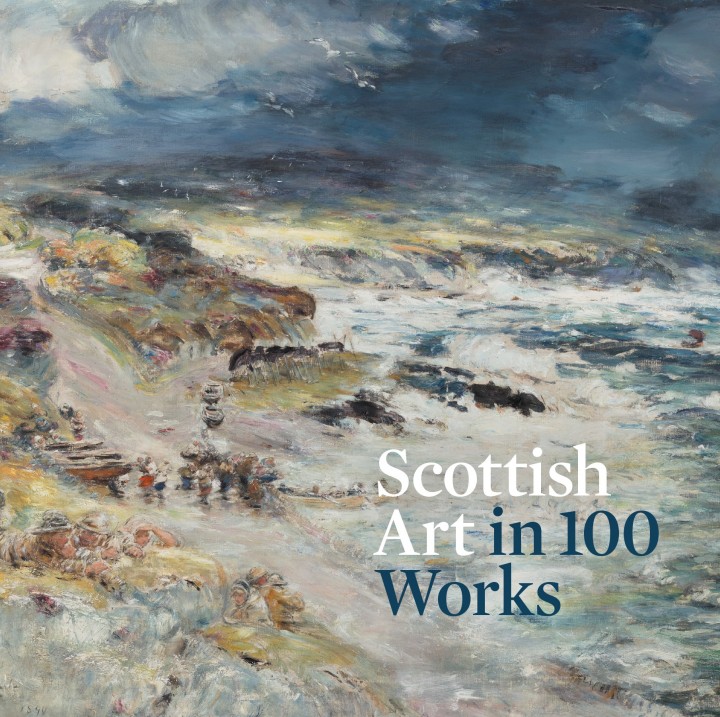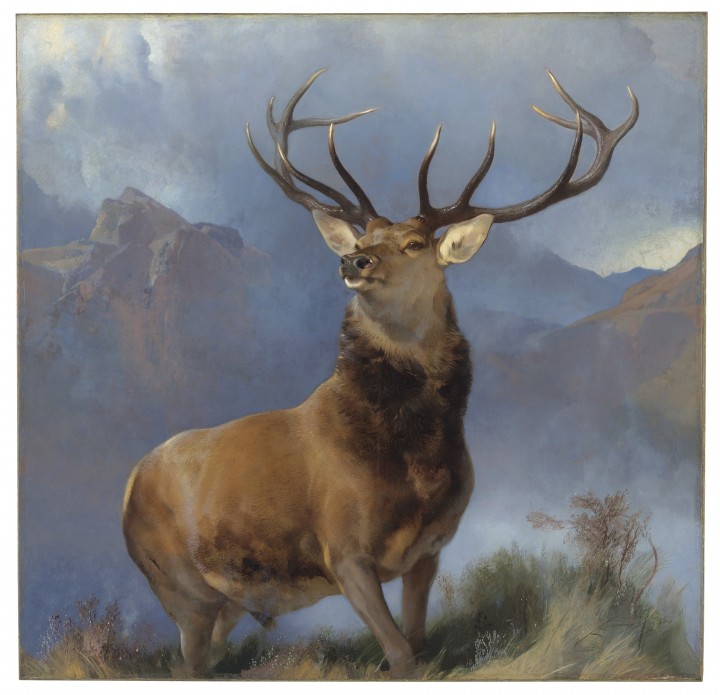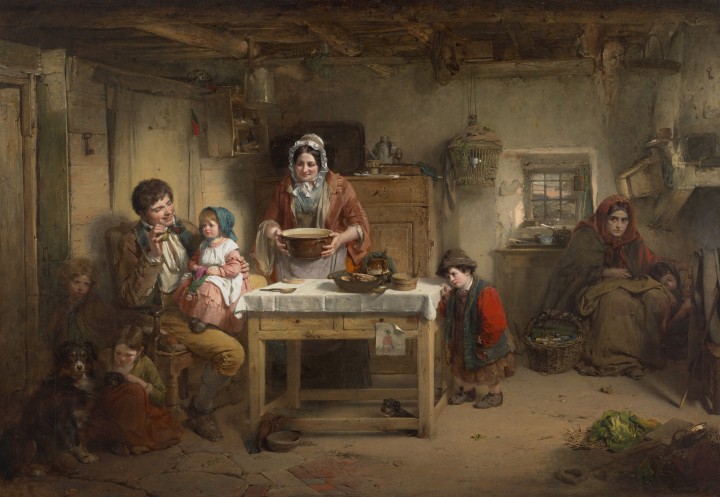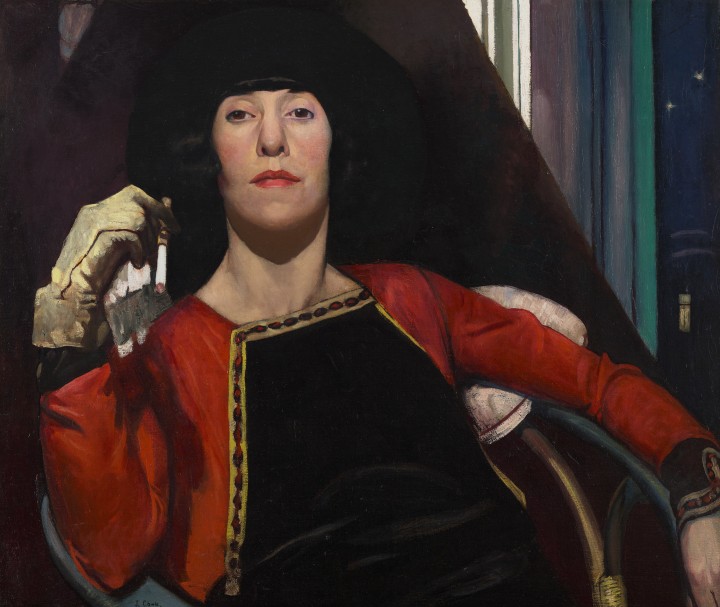Scottish Art News
Latest news
Magazine
News & Press
Publications
Scottish Art in 100 works
By Jen McLaren, 27.11.2023

A guide to 100 of the finest works of art from the collection of the National Galleries of Scotland (NGS) has been published, coinciding with the recent completion of a £38m project to revamp the display of its Scottish collection.
‘Scottish Art in 100 Works’ was edited by Tricia Allerston, chief curator of European and Scottish art and portraiture at NGS. Tricia is also co-director of Celebrating Scotland’s Art: The Scottish National Gallery Project, which saw the five-year redevelopment of the new gallery spaces on The Mound in Edinburgh to include over 130 works dating from around 1800 to 1945.
While the period covered by the new galleries is fairly limited, the book looks at the wider collection, spanning the late 16th Century right up to 2022, with a work by Alberta Whittle.
Tricia describes the publication as “a book of highlights” explaining that NGS wanted to celebrate the collection, asking colleagues from across the teams at The Mound, The Portrait and The Modern to choose works. The initial selection was a collaborative effort, with Tricia then involved in honing it down.
“It was quite interesting what some of the colleagues came back with. Not ones I would usually expect – the artists, maybe – not necessarily the most famous works, but ones the curators thought were particularly important to be included,” she explains.
And Tricia describes the editing process as “a nice and also a difficult thing.” She goes on: “I was keen to think about geographical representation, diversity and gender representation – which is tricky for a historic collection.”
Scottishness is also placed under a new light, as Tricia explains: “Something we have thought about a lot is what it means to be Scottish and, traditionally, we have had quite a specific criteria of: you have to be born here, train here, have spent most of your career here, and not all of these artists have.”
Before, either an artist (or a portrait sitter) had to have been born, or to have grown up in Scotland, to have trained there, or to have spent a significant part of their career in the country. To be considered for this publication, however, an artist must have contributed in a meaningful way to the art associated with Scotland. “In a way, this isn’t about Scottish artists, it’s about Scottish art, so we have tried to think about works that have contributed something,” Tricia adds.
. national galleries of scotland, purchased 1925..jpg) James VI and I, 1566 - 1625. King of Scotland 1567 - 1625. King of England and Ireland 1603 - 1625 (As a boy). National Galleries of Scotland, Purchased 1925.
James VI and I, 1566 - 1625. King of Scotland 1567 - 1625. King of England and Ireland 1603 - 1625 (As a boy). National Galleries of Scotland, Purchased 1925.
The first image in the book is oil painting ‘James VI with a Sparrow Hawk’ (c.1574) by an unknown Netherlandish artist, which demonstrates the health and prosperity of the future governing king – then aged around eight years – at a time of great political uncertainty.
The selection is arranged chronologically with each work reproduced alongside a short introductory text by one of 24 expert NGS contributors, including some PhD students who were part of the team. Tricia also wrote the introduction to the book, telling the story of the Scotland collection and placing it within the context of Scottish art history.
 Monarch of the Glen, Sir Edwin Landseer. National Galleries of Scotland. Purchased by the National Galleries of Scotland as a part gift from Diageo Scotland
Monarch of the Glen, Sir Edwin Landseer. National Galleries of Scotland. Purchased by the National Galleries of Scotland as a part gift from Diageo Scotland
One of the more difficult decisions, she says, was whether to include English artist Sir Edwin Landseer’s ‘The Monarch of the Glen’ (c.1851) “Landseer did come up to Scotland for 40 years and when we bought that painting we got funding and did a big project of taking it round the country and asking people about it. Universally, it came back that people loved it and how they feel it is a Scottish image.”
 Carol Rhodes, Industrial Belt, 2006. National Galleries of Scotland. Purchased with help from the Standard Life Gift Acquisitions Fund 2008
Carol Rhodes, Industrial Belt, 2006. National Galleries of Scotland. Purchased with help from the Standard Life Gift Acquisitions Fund 2008
She was also keen to see artists such as William Johnstone and Carol Rhodes included: “Carol Rhodes was an artist I knew – and I love her work – she died not long before we started working on the book, so I was really keen that we represent her work because there won’t be any more. So there are personal elements [to this publication] too.”
 Thomas Faed's Home and the Homeless. National Galleries of Scotland. Purchased 1992.
Thomas Faed's Home and the Homeless. National Galleries of Scotland. Purchased 1992.
Some works, such as Thomas Faed’s ‘Home and the Homeless’ (1856) used to hang high in the galleries so the content could not be seen fully. Tricia says: “It was one of the paintings that when it was in the conservation studio, you saw the detail. There’s a little child’s drawing of a soldier and the question whether the woman by the fire is a widow. For so long, narrative painting like that has been unfashionable, but they are beautiful paintings.”
 James Cowie's The Yellow Glove, 1928. National Galleries of Scotland. Purchased 1994
James Cowie's The Yellow Glove, 1928. National Galleries of Scotland. Purchased 1994
James Cowie’s ‘The Yellow Glove’ (1928) meanwhile, is a striking image that belies the artist’s usual style. It is a bold depiction of his second wife, Alice Cowie, painted in the early years of their marriage.
“You can get a real sense of the personality of the sitter,” Tricia explains. “That’s a really strong portrait but you can think about it from different perspectives, there are so many ways you can analyse that painting. In comparison to other Cowies, it’s so different – it’s so assured.”
‘Scottish Art in 100 Works’ is published by National Galleries of Scotland, RRP £20




